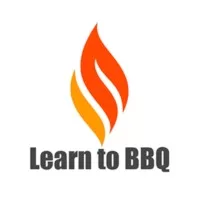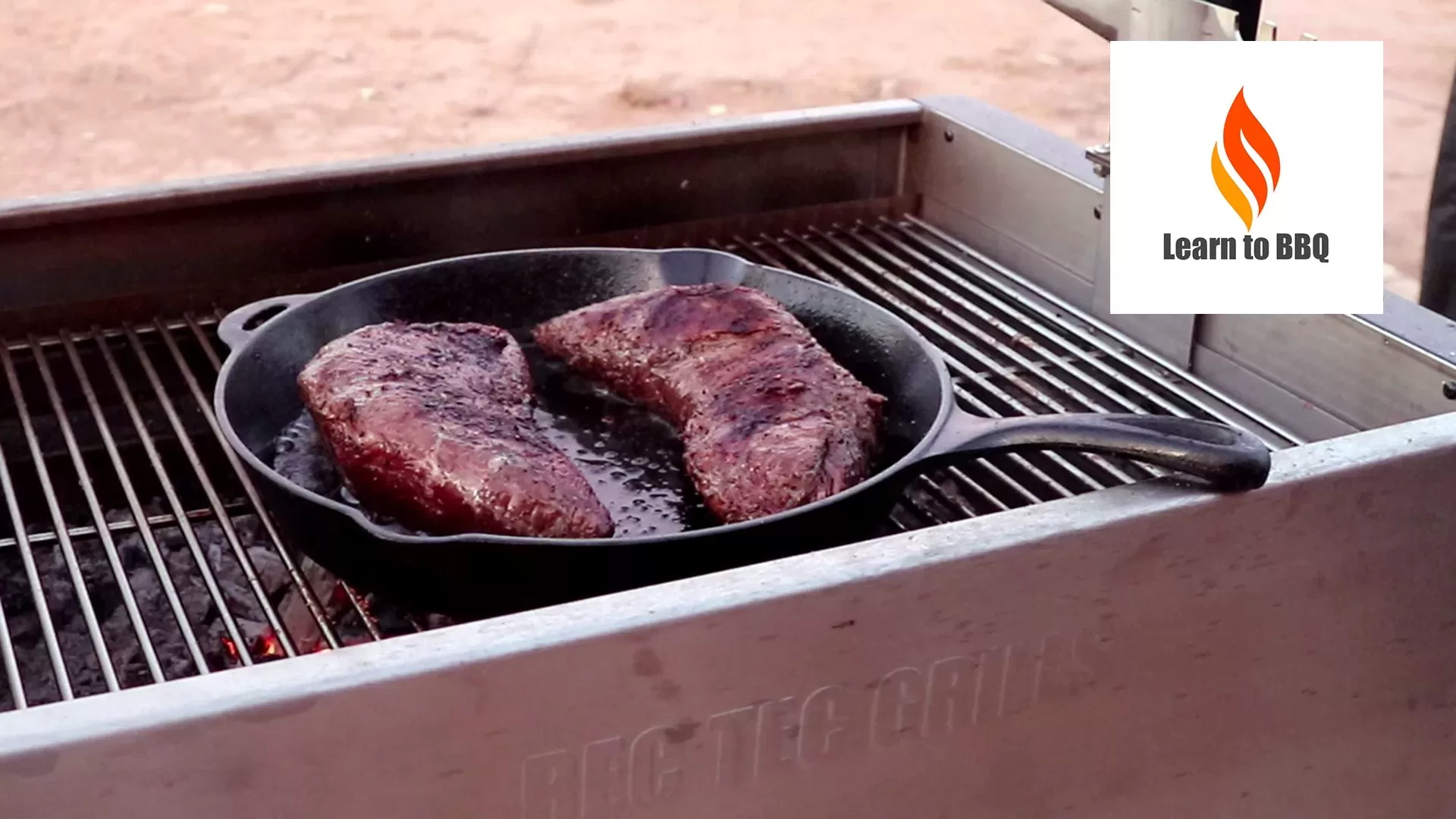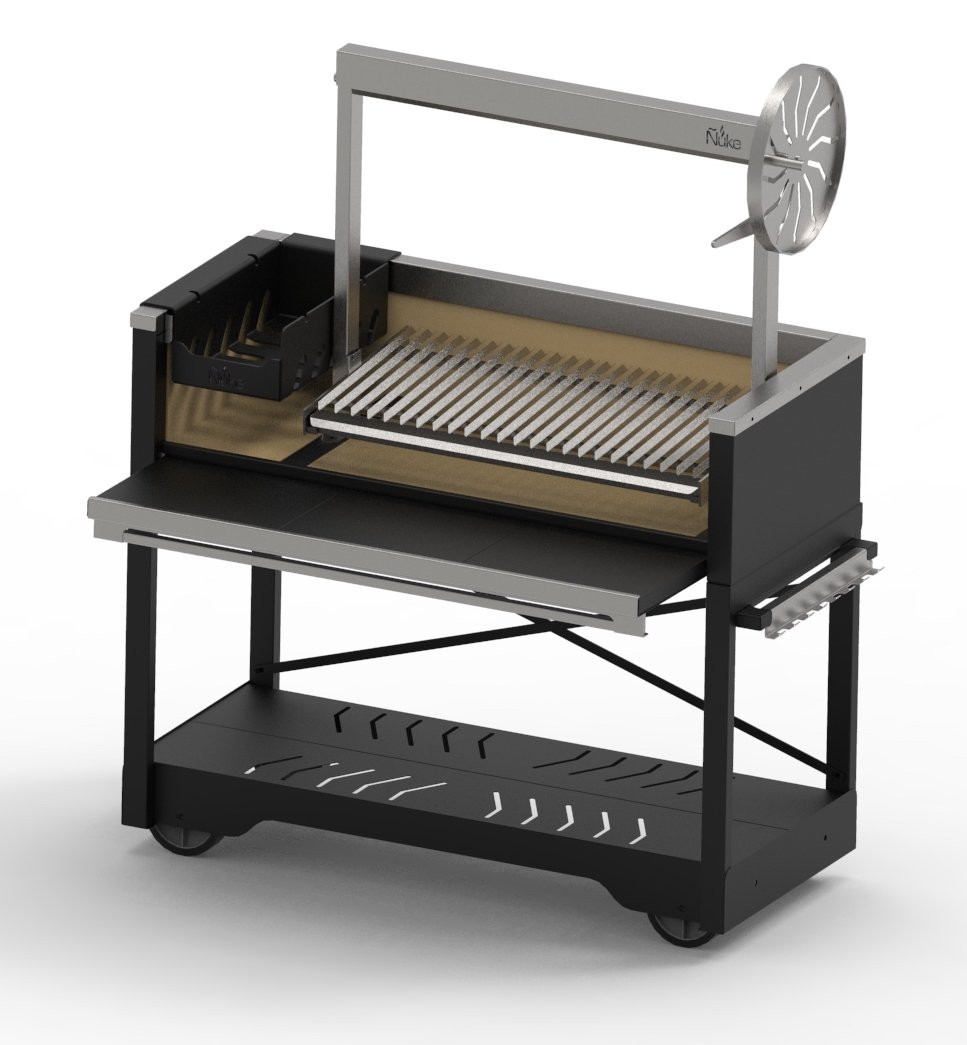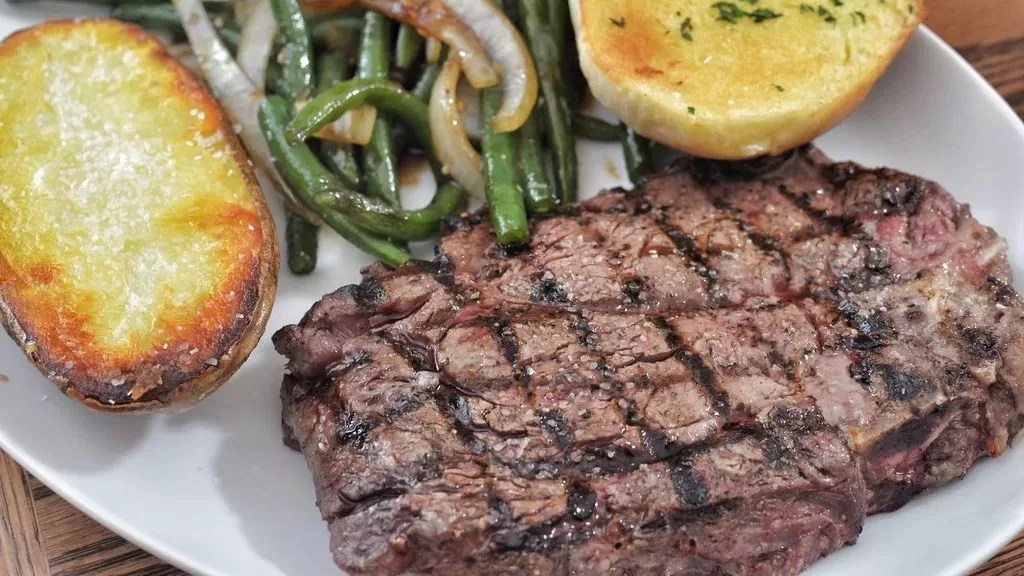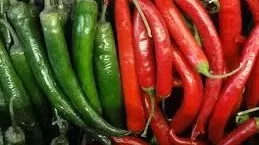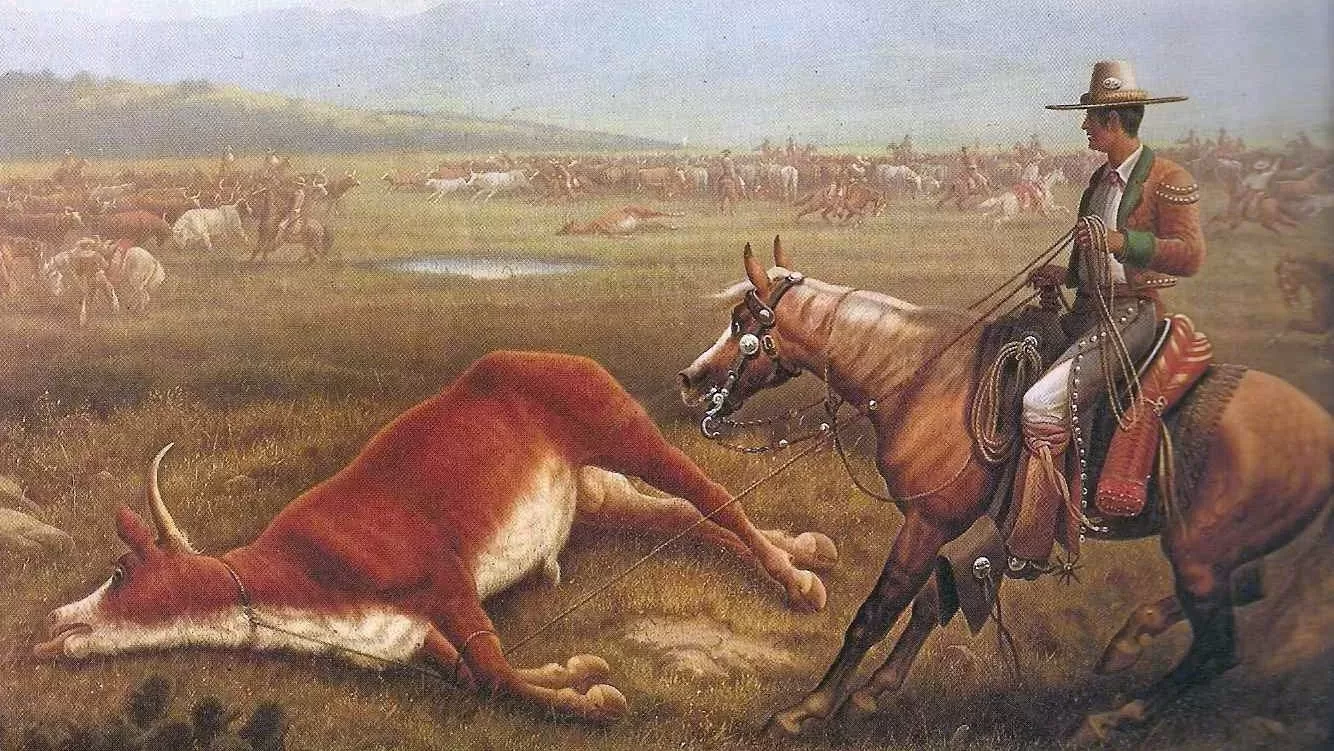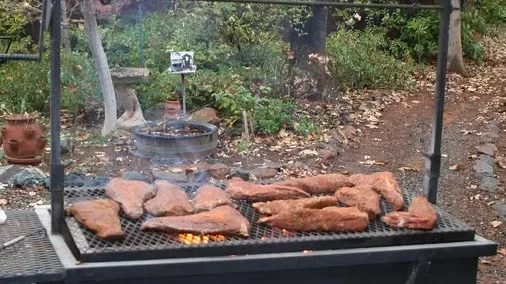So we start with the question? What is Santa Maria Style Barbecue?
Well, I will tell you what it is not Argentinian Barbecue or Asado.
The physical grills are similar but the barbecue that comes off those grills is very different.
Let’s start with where is Santa Maria valley.
It is positioned in a valley by the pacific coastline. 150 miles northwest of downtown Los Angeles and about 65 miles northwest of Santa Barbara.

The city is notable for its wine industry and Santa Maria-style barbecue.
Sunset magazine called Santa Maria “The West’s Best BBQ Town

So what is so special about santa maria?
First the weather is perfect for year round growing of grass. The average highs in July are 74 F and the lows 54 F. In January the average highs are 66 F and the lows 39 F. The last time they had snow was 1945.

With ideal weather and location In the 1800s, the land was divided into large cattle ranches. The outlines of which still define roads and town boundaries today.
Santa Maria-style barbecue is thought to have evolved in the mid-1800s, in the valley of Santa Maria. Local ranchers would host Spanish-style feasts each spring for their vaqueros or cowboys, following big cattle roundups.

They barbecued meat over pits filled with hot coals of local red oak.
In 1931, the Santa Maria Club started a “Stag Barbecue. This was held on the second Wednesday of every month, with up to 700 patrons attending each event.
Stag Barbecue

Over the years, the legend of Santa Maria Style Barbecue grew, turning a local treasure into a major attraction.
In those early days, the favored cut was top-block sirloin. The meat was rolled in a mixture of salt, pepper, and garlic salt before being barbecued. Cooked over the red oak coals, which contribute a smoky, hearty flavor.

In the 1950s, a local butcher named Bob Schutz perfected the tri-tip, a triangular bottom sirloin cut that quickly joined top-block sirloin as a staple of Santa Maria Style Barbecue.
Tri-Tip

President Ronald Reagan was an avid fan of Santa Maria Style Barbecue. Local barbecue chef Bob Herdman and his “Los Compadres Barbecue Crew” staged several barbecues for President Reagan, including five feasts on the South Lawn of the White House.
So what is a Santa Maria Style BBQ grill?
It is a grill that had a large pit area that’s primary fuel is wood or lump charcoal with wood.
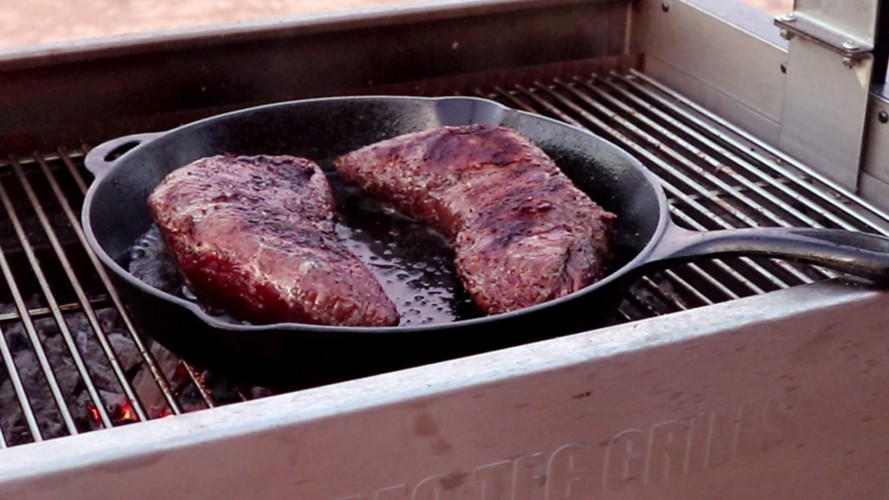
It also has a grate that can be raised or lower depending on how much heat you want to apply to the food.
The other way the pitmaster can control temperature is just by using a shovel or rack to move the coals around.
The grill I have also has a rotisserie accessory that is connected to the grate allowing you to move the food on the rotisserie up and down giving you great control over the cook.
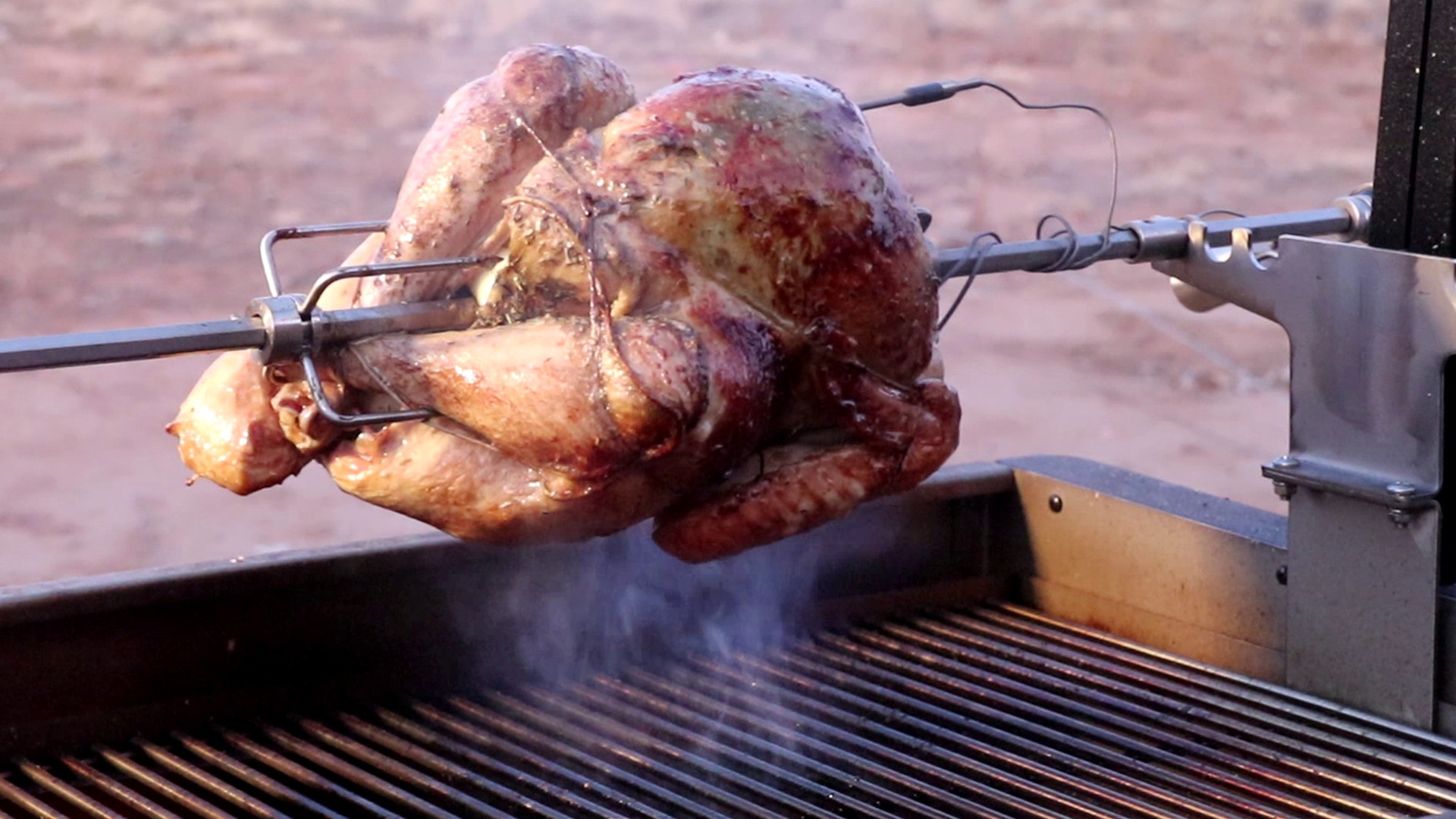
As you can see Santa Maria Style BBQ is a simple but effective way to prepare barbecue. It has a 200-year history and if you are a BBQ enthusiast like me it is one of the more enjoyable ways to prepare a great meal while showing off your true barbecue skills.
One of the nicest Santa Maria Grills on the market is The Puma.
